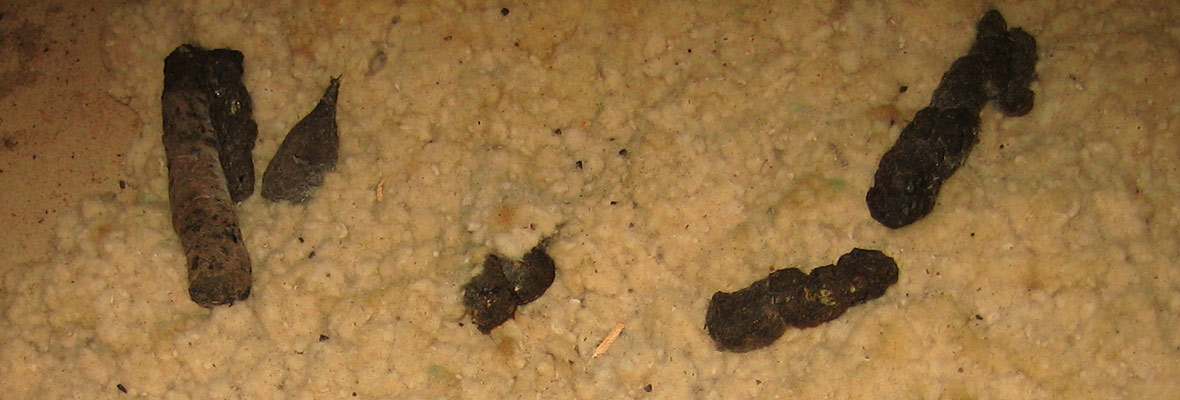- info@animalatticpest.com
- Call - we service 300 locations
Opossum Feces – Appearance And Health Risks
If you know you have a wild animal in your attic, the first step to getting it out is identifying what creature it is. As unappealing as it may seem, examining the feces is one of the best ways to confirm that you have an opossum in your home, other than actually seeing it. For this to work, however, you need to be able to recognize the feces. You should also be aware of the health risks linked to opossum feces so you can take the necessary precautions.

General Description
Possum feces are fairly large in size compared to other animals that may take up residence in your attic or another area. These feces look similar to dog waste and are typically around ¾ of an inch in diameter, although it can vary. The sides of the feces are typically smooth with tapered ends. Generally, the feces will be curly as opposed to straight. In some cases, you will find mold growing on the waste as well. If you see seeds in the feces, then this is not possum poop; it is likely to be from raccoons although it may be another animal.
Health Concerns
The health risks associated with opossum feces are the same as with other wildlife waste products. Salmonella and leptospirosis are both potential problems, which is why you should be very careful with the opossum feces and clean it up as soon as possible. That is why you should never touch the feces directly or breathe in the air in the room the waste is; wear a mask.
How To Remove Possum Waste
Unfortunately, the only way to safely and effectively remove the opossum feces you find is doing so by hand. This includes removing dirty or soiled insulation and other items. Removing them by hand ensures that particles don’t break off and enter the air. Even so, you need to wear at least a HEPA respirator mask and sturdy gloves, although you should really wear a Tyvek suit as well. Pick up all the feces by hand and place them in plastic bags; don’t be afraid to double bag them. Afterwards, you need to sanitize the area using an enzyme cleaner or strong disinfectant. The ideal method is using a fogging machine or spraying the cleaner somehow as this ensures that the disinfectant you have chosen reaches every surface in the attic, even the nooks and crannies that are hard to reach. You can also hire a professional to take care of the entire cleanup process for you.
